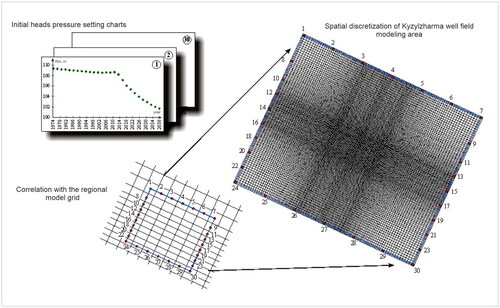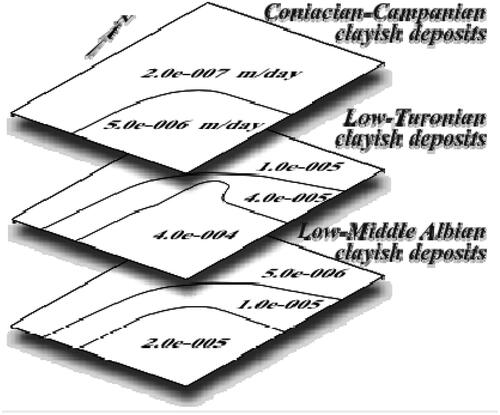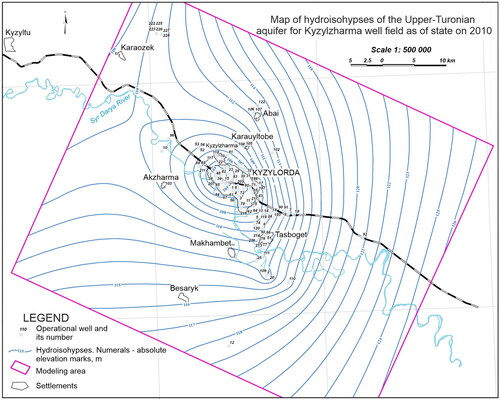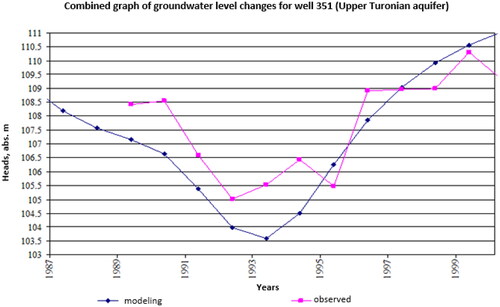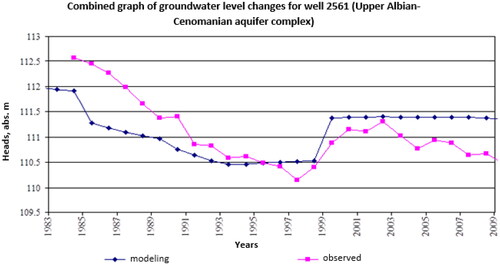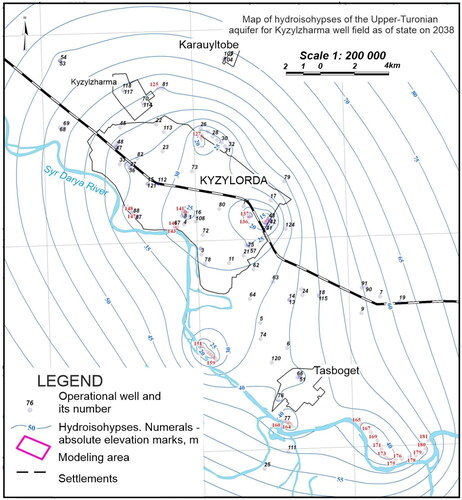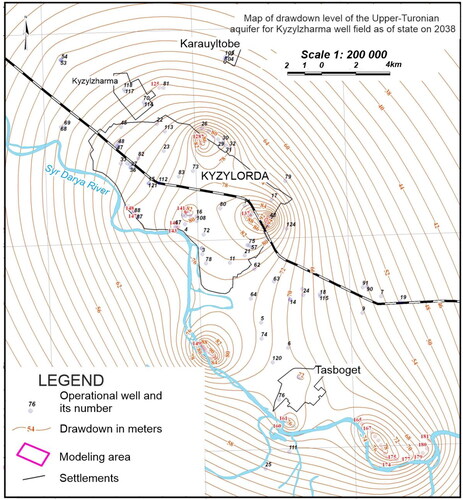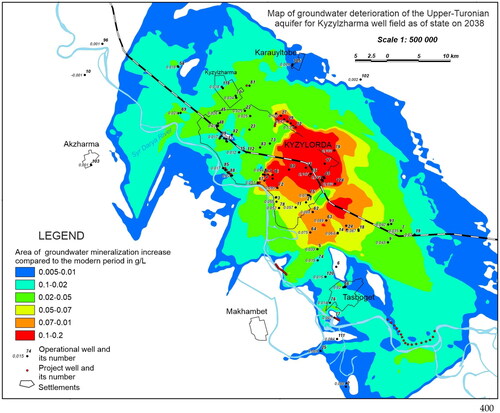Figures & data
Figure 1. The experimental Kyzylzharma groundwater well field study area at Kyzylorda, Kazakhstan, in the Syr Darya Artesian Groundwater Basin.
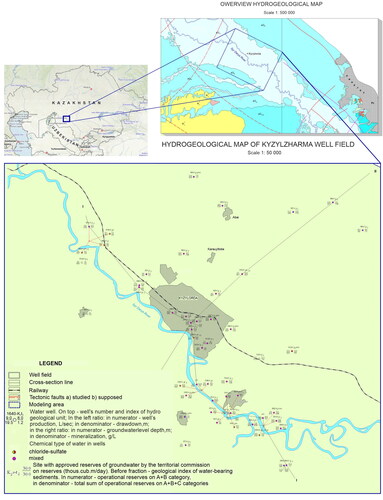
Table 1. Representative hydrogeological cross-section of the Kyzylzharma groundwater well field and conceptual schematization for the model simulations.
Figure 3. Graphical representation of the hydro chemical facies and factors controlling the water chemistry: a) Durov diagram; b) Piper plot.
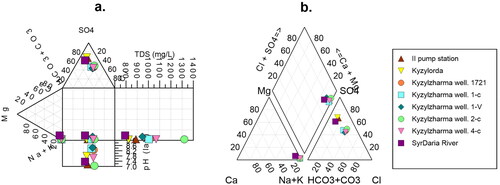
Table 2. Syr Darya water quality.
Figure 5. Comparison between calculated and observed heads for steady-state conditions (time step = 1 day, 1974).

Figure 6. Calculated groundwater levels of the Upper Turonian aquifer from the steady state calibration (1974).

Table 3. Long-term groundwater balances based on steady state calibration for 01/01/1974.
Data availability statement
The data used in this study are available upon request from the corresponding authors.

